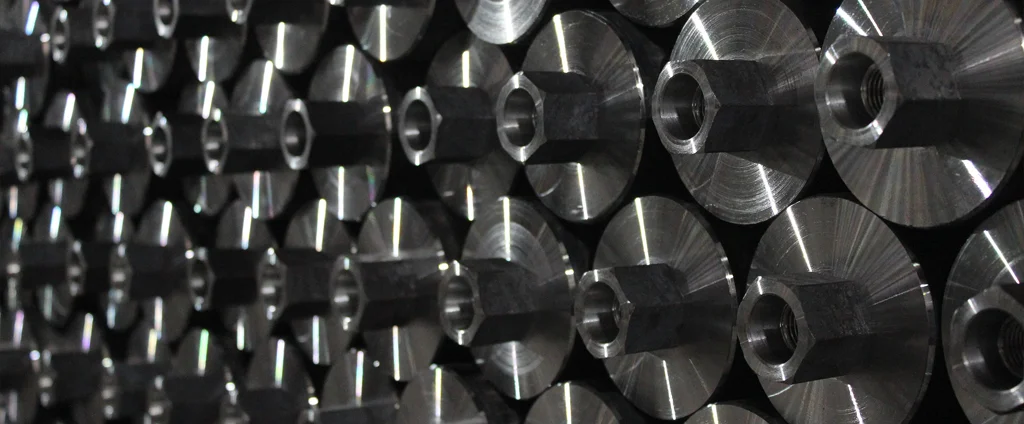SAE/AISI 1040 Carbon Steel (UNS G10400)

SAE/AISI 1040 carbon steel is a widely used medium carbon steel known for its excellent balance of strength, machinability, and hardenability. It is a versatile material favored for various applications across industries due to its reliable mechanical properties, making it ideal for components requiring durability and wear resistance.
| Chemical Composition | ||
|---|---|---|
| Element | Min | Max |
| Iron | 98.6% | 99.0% |
| Carbon | 0.37% | 0.44% |
| Manganese | 0.60% | 0.90% |
| Phosphorous | —— | 0.04% |
| Sulfur | —— | 0.05% |
The following table provides a list of SAE/AISI 1040 properties in both SI and US customary/Imperial units.
Click on the button to switch between Metric and Imperial units.
| Physical Properties | Metric |
|---|---|
| Density | 7845 kg/m3 |
| Mechanical Properties | Metric |
| Tensile Strength (Ultimate) | 620 MPa |
| Tensile Strength (Yield) | 415 MPa |
| Young’s Modulus (E) | 190 - 210 GPa |
| Bulk Modulus (K) | 140 GPa |
| Shear Modulus (G) | 80 GPa |
| Elongation at Break | 25% |
| Poisson’s Ratio (ν) | 0.27 - 0.30 |
| Brinell Hardness | 201 |
| Thermal Properties | Metric |
| Thermal Conductivity | 51 W/m·K |
| Specific Heat Capacity (Cp) | 470 J/kg·K |
| Coefficient of Thermal Expansion (αL) | 1.13×10-5 1/°C |
| Electrical Properties | Metric |
| Electrical Conductivity | 4.1×106 S/m |
| Electrical Resistivity | 2.4×10-7 Ω·m |
The values in this table are approximate and can vary depending on various factors such as the specific manufacturing process and heat treatment applied to the alloy.
Advantages & Disadvantages of 1040 Carbon Steel
| Advantages | Disadvantages |
|---|---|
| Good strength | Limited hardenability |
| Good wear resistance | Low corrosion resistance |
| Good machinability | Moderate toughness |
| Cost-effective | Limited temperature resistance |
Applications of 1040 Carbon Steel
SAE/AISI 1040 carbon steel is utilized in numerous industries due to its advantageous combination of strength, toughness, and machinability. Common applications include:
- Machinery Components: Used to manufacture gears, shafts, couplings, and spindles, offering strength and wear resistance for power transmission and mechanical stress.
- Bolts, Nuts, and Fasteners: Ideal for producing fasteners due to its machinability and strength, ensuring secure and reliable connections in machinery and structures.
- Axles and Shafts: Its strength and toughness make it suitable for automotive and machinery axles and shafts, supporting torque transmission and rotational motion.
- Springs: Commonly used in spring manufacturing for automotive suspension, mechanical devices, and industrial equipment, owing to its resilience and ability to withstand repeated loading.
- Hand Tools: Employed in the production of durable hand tools like wrenches, hammers, chisels, and screwdrivers due to its excellent machinability and strength.
- Construction Components: Applied in structural beams, supports, and brackets, providing strength and structural integrity for construction applications.
- Agricultural Equipment: Used in components like plowshares and blades for agricultural machinery, benefiting from its toughness and wear resistance.
- Railroad Components: Utilized in railroad components such as axles, wheelsets, and couplers, offering strength and fatigue resistance for reliable performance under demanding conditions.
